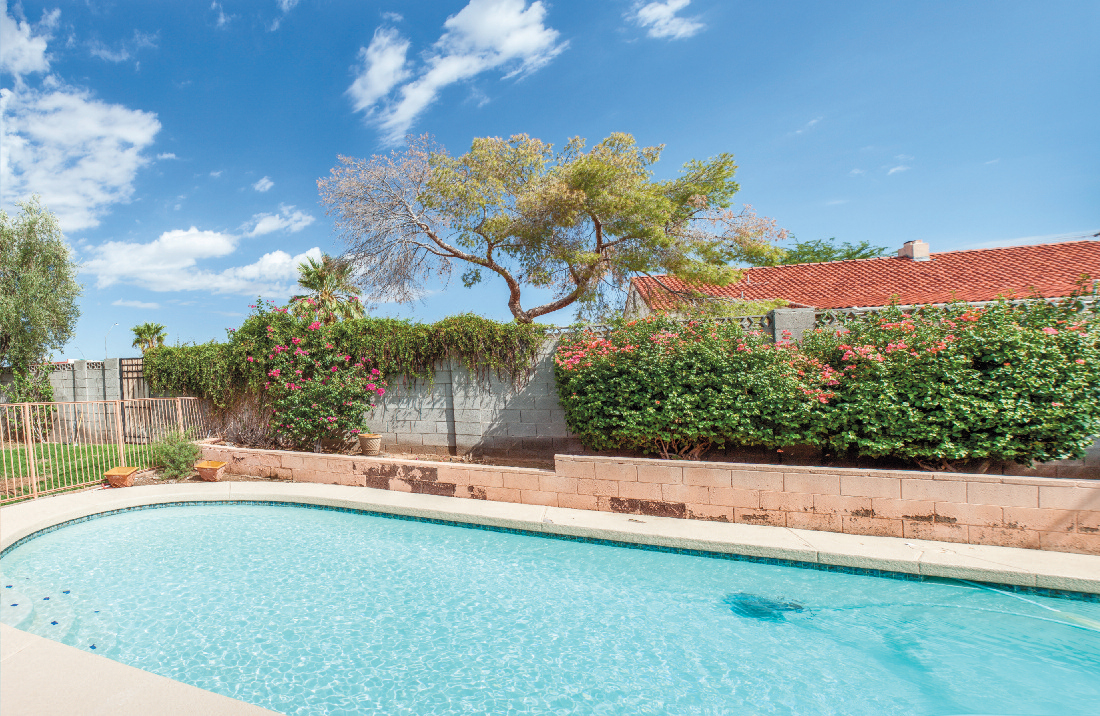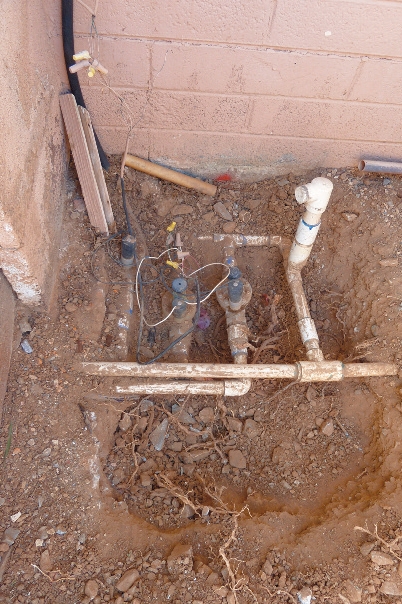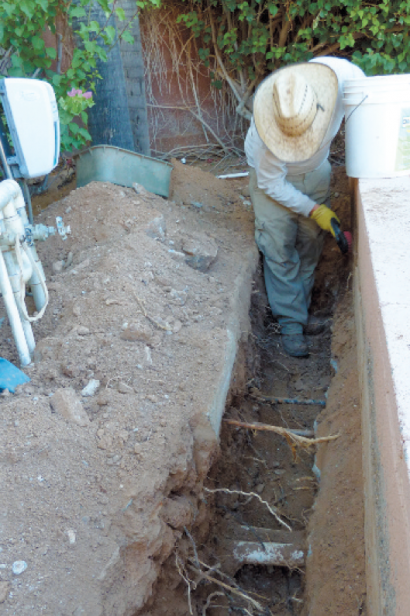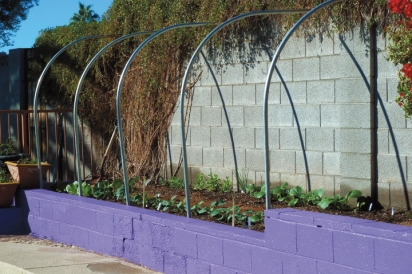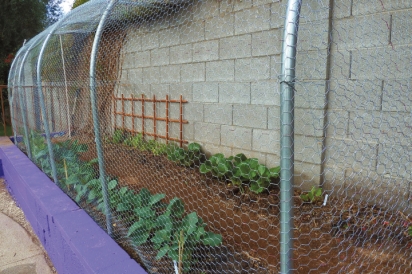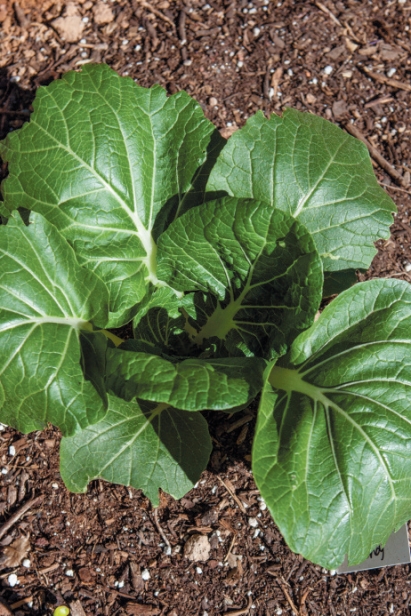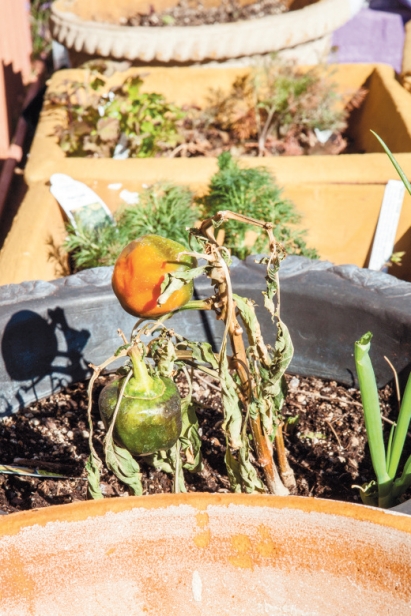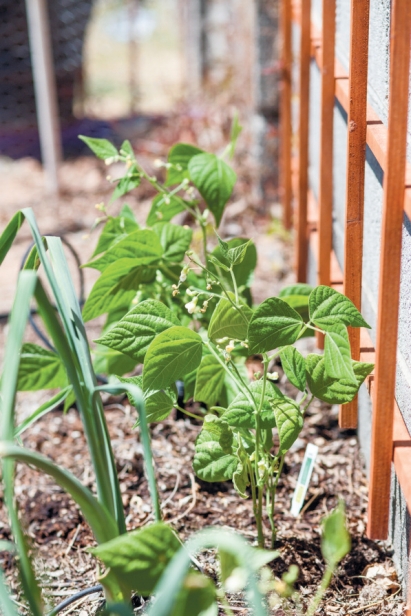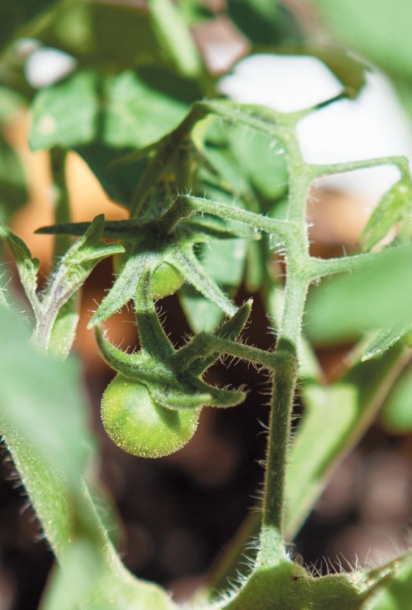How to Start a Vegetable Garden: A Novice Gardener's Triumphs and Defeats
I was sitting on the patio glider at sunrise one lovely summer morning last year, swaying gently back and forth while watching the dogs dig to China, when I noticed how barren the planter around the pool looked. Sure, the bougainvillea and cat's claw lining the block fence were colorful enough but the garden itself was bleak.
That's when I had one of those "I coulda had a V8" moments.
"I should have a vegetable garden. I need to have a vegetable garden. I can't believe I don't have one!"
My almost-barren backyard, where there was ample space for a mini farm, wasn't producing anything but half-dead Bermuda grass and overgrown bougainvillea entangled with cat's claw planted some 30 years ago.
And that's when I decided it was to be the year of Sharon's garden. But where to start?
Even though I've lived in the Valley for close to 40 years, my knowledge about how to make a garden grow here is limited to saguaro, ocotillo and the aforementioned bougainvillea. But vegetables? I had no idea.
I decided it was best to go to an expert, someone who knows about growing food in the desert. I did what I always do when I need information: I posted a query on Facebook: "Who can help me start an edible garden?"
Joan Baron, someone I've known for probably 20 years, offered her services. I knew Joan as a local artist but had no idea that she was involved with edible gardens until she contacted me.
Getting Started
My journey from barren backyard to edible garden began with a long discussion about what I like and do not like to eat. This chat with Joan took place at table over a meal, because any discussion about food should be undertaken while eating. I knew Joan was the right person to help me because she was strangely obsessed with food. Go figure.
Back at the house, Joan measured the space. She examined the soil. She checked the sprinkler system. She shook her head, but not affirmatively.
I knew it wasn't going to be easy. If I had thought it would be, I'd have just thrown some seeds down and watered. I didn't, however, realize how involved the project would end up. It takes a lot to get the desert ready to accept and nurture the lovely vegetables I was dreaming about eating.
The sprinkler system, which admittedly barely kept the Bermuda grass alive, was not suited to cultivating vegetables.
This is the desert, so water is very important. The spot we chose for the garden did not offer adequate irrigation possibilities so that had to be taken care of first.
Updating the watering system did not turn out to be a simple task. The original system had been installed 35 years ago using PVC pipe that was too narrow. That meant digging trenches, putting in new pipes and adding a waterproof barrier to protect the cool deck around the pool.
To be honest, I don't even have weeds in the planter because even weeds won't grow in that soil. Being mindful that this is the desert and the soil, although adequate for saguaro and ocotillo, is not suited for broccoli and onions, the next step was to bring in some soil rich enough to support a vegetable garden.
The work, as all work does, took longer and was more involved than originally thought and, as these things go, the price was higher as well. But for Sharon's garden, it was worth it. I couldn't wait to get my hands in the soil. I kept thinking about all the money I'd be saving by growing my own food.
Fall and First Planting
As soon as the initial preparations were completed, Joan and I went shopping for plants. Since it was already early October when we started planting, it was a little late to start from seed.
We went here. We went there. I didn't buy organic plants. I figured that once they reached my garden, their lives would change. I wasn't going to use anything artificial and all the products I was using were organic.
We bought small plants: purple cauliflower, white cauliflower, garlic, peas, broccoli, baby bok choy, lettuce and more lettuce. We got worm castings and fertilizer and mulch. And then we got down on our hands and knees and played in the dirt. One of the most satisfying days of my life.
I went out each morning to check. My cute little plants started filling out almost immediately. The weather was unusually warm but not hot and they thrived. New leaves and shoots appeared daily.
And then our squirrels discovered the garden. We've had squirrels for years. I once tried to grow strawberries and the little critters ate the flowers before I even got one fruit. I hadn't thought about their voracious appetites for vegetables until one morning when I went to check on my garden and found the lettuce decimated and the bok choy leaves chewed to the ground. At first I thought it might be bugs but I took a chewed up leaf to the garden center and, no, it was an animal.
The squirrels were not ignoring my garden. So Joan had a chicken wire enclosure built for the garden that cost almost as much as my last vacation. But now my little babies were safe from animal invasion.
Soon I started harvesting peas – eating them all before I got them into the house. So sweet and tender that there was no need to peel them. Salads every night with delicate beautifully fresh lettuce. And crunchy sweet baby bok choy that I probably should have let get a little bigger but I was too overcome with excitement to leave them in the ground any longer.
The broccoli and cauliflower plants were thriving. Full and green and healthy. But nothing was happening. No broccoli. No cauliflower. October became November, which turned to December and nothing. I asked Joan. I asked Maya Dailey and Bob McClendon. I Googled. I prayed over my plants.
Winter and the Big Freeze
And then we had that terrible freeze. That freeze lasted days. I covered everything, but many of the plants – the bougainvillea and cat's claws as well as the pepper plants and herbs – took themselves to plant heaven where it is sunny and warm every day.
A few days after the freeze, the cruciferous veggies started strutting their stuff! They needed cold weather to "set" and the freeze was just what they needed. I lamented the loss of some of my plants but reveled in the beauty of purple cauliflower. Have you ever seen it growing? They look like vibrantly purple flowers surrounded by green leaves. The most beautiful sight. Truly a spiritual experience for me.
The cauliflower and broccoli kept giving and giving. Green, purple and white. Roasted every night for dinner. Breathtaking. Truly works of art. And so incredibly delicious.
And then, it was over. The weather turned warmer – hotter, even. It was time to allow the plants that had fed us all winter to move out so that a spring/summer garden could be planted.
Although pretty much everything I planted thrived, the garlic, for some reason, never came up. To be investigated for next year. Did I plant the garlic upside down? Would that have made a difference?
Alas, I wish I had more garden space. I would have allowed the broccoli to keep producing and most certainly could have saved the lettuce a while longer. But it was time to move on.
Spring and a Second Planting
First, I took a tomato-planting class from Carl Seacat at Maya's Farm. Very instructive. Then I went to a garden center and talked to people and made my decisions.
I chose to plant haricot vert, tomatoes, zucchini, cucumbers, eggplant, Honeydew, watermelon and the usual summer herbs. This time I went it alone. I knew how to prepare the soil. And I had Google if there was a problem.
The haricot vert started producing almost immediately. Again, I ate as many of them as I could in the backyard while I was tooling around in the garden. The cucumbers were prolific and I thought I was going to have to learn to make pickles!
The eggplants, pretty little purple sweethearts, were growing really well. We had eggplants almost nightly for dinner. The zucchini were fresh and delicious although I sometimes had trouble keeping my hands off those tender flowers.
The tomatoes. That's another story. I know people who have no trouble with tomatoes in the desert. Perhaps it's the variety. I don't know. My first mistake, I think, was planting them in pots. I thought I could just move the pots in and out of the sun as needed. What I didn't know was that: 1. The pots hold the heat keeping the roots too hot and 2. It's hard to keep the plants from becoming waterlogged.
Whiteflies. They appeared almost as soon as my healthy-looking tomato plants started to fill out. I turned to the Internet. I sprayed them with soapy water. I placed pots of marigolds around them because I'd read that whiteflies don't like marigolds. That seemed to help or maybe it was that I painstakingly picked off every single whitefly I could see! Flowers appeared. And then tomatoes. But it all seemed to be taking so long. I had not bought the best plants. Too many weeks to maturity – 75 days after the flower appears is not good for an impatient person.
Then the leaves started withering and turning lighter green. Calcium? I had used bone meal as a starter per Carl Seacat's recommendation but I tried calcium. Didn't help. Iron? No. Fish emulsion? Nope. As if that wasn't enough, I saw blossom end rot from overwatering.
Then the really hot weather hit and the plants stopped producing altogether. The love apples that were on the plants never seemed to ripen and finally it was over. No homegrown tomatoes. Lots of lessons learned.
Summer and Its Challenges
The rest of the garden was doing just fine until one day when it wasn't. The demise of my garden started when we left on our first weekend vacation. I had faith that the sprinklers and the shade cloth would do the job for the two days we were away. Alas, that did not prove to be true. Perhaps my plants felt neglected since I wasn't here to speak to them as I usually did each morning. Whatever the reason, the garden began a decline.
The haricot vert and the cucumbers were probably getting too much water. But the garden is on one watering system and the melons needed the water. Choices. I chose the melons and so the haricot vert and cucumbers met their early demise. The tomatoes had already stopped giving.
Slowly the melon vines took over the garden and I allowed it to happen. The watermelon vine was growing and producing flowers but no fruit. The Honeydew vines were putting out lots of lovely fruit. If only I could leave them on there long enough to get really sweet. If only. The eggplants seemed to be oblivious to the chaos around them and they kept going.
But the zucchini. Not sure what happened. Too much water? I don't know. But they were gone as well. And then, disaster struck again. Daytime temps got up to 120° (and probably above, in my backyard). Slowly the herbs died off. Bye-bye, sage and parsley. Even the "you can't kill it mint" started to look pooped out.
I decide to let Mother Nature do what she does best and let what would happen, happen. Mother Nature chose to keep the melons and the eggplant going but took the rest of the vegetables.
At this time (mid July), I have five Honeydew melons growing and ripening (the first one I picked weighed 9. pounds!). The eggplant keeps rolling along, offering up purple goodness every few days. The basil is prolific as you would expect in this heat.
Even though the tomato plants looked like they'd met their maker, I moved the pots into the garden area where they are getting shade and regular watering. I thought they were goners but they seem to be holding their own. If only they can make it to September when the weather cools off a little I know they'll reward me with fruit. I just know it.
Lessons Learned
In the meantime, I'm planning the next planting. Early September, I think. After the soil has had time to rest and rejuvenate and cool off a little. I'll try to figure out a better watering system because not every species needs the same amount of water.
I'm reading up on companion planting now that I realize that some plants actually protect others from bug invasion.
I'll ditch the pots because I haven't done well with them. Maybe some edible flowers but most certainly no fruits or veggies or herbs in pots.
I'll try tomatoes again in the early fall. This time I'll get varieties that ripen sooner – 75 days of staring at a green tomato is very disheartening.
I'll probably limit the garden to fewer species. Definitely had too much going on in that small space. Overzealousness has always been a problem for me.
Even with the sadness of losing so many plants to the elements and to my ignorance, it's been a splendid year. Going out to pick food that I grew myself is most gratifying. And, honestly, as a basically lazy person who rarely plans a meal ahead, having food in the backyard has been a lifesaver.
Once you've had the taste for veggies straight from your own garden, it's hard to give that up. Come early September, I'll be out there turning the soil getting it ready for the next crop of vegetables. And maybe, just maybe, I'll leave the peas on the plants until they're actually mature.


